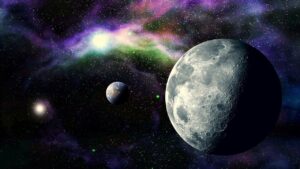A Brief Way to Explain Planets Because We Are In One
Earth is a planet that exists inside a solar system. But are there any other solar systems out there? What even is, a planet? Here’s a brief article to explain planets.
The Planet Panorama
There are so many planets out there, all different in sizes, geological formations, compositions, atmosphere, and many others. So how do we categorize them? Well, our scientists found a way to separate the planets they have discovered into gas giants and terrestrial planets. In our solar system, we have four gas giants, Jupiter, Saturn, Uranus, and Neptune. We also have four terrestrial planets, Mercury, Venus, Earth, and Mars.
Gas giants are so-called because they are planets made up mainly of gas. There is no wide physical surface or any land. In fact, if it’s possible to travel across Jupiter, you would pass straight through without touching land, because there isn’t any.
Terrestrial planets, on the other hand, are made up of solid masses. These have a solid surface that could be landed on.
The Quest for Habitability

Earth is extremely lucky to be in an exact position in the universe to cultivate life. Our position is called “the Goldilocks zone,” meaning, it’s not too much, not too little, but perfectly balanced.
For decades, people have been fascinated with the idea of finding a planet in the same Goldilocks zone as our own to see if there are other life forms out there.
Giant Worlds Explain Planets Made of Gas
The reason why gas planets are called gas giants is simply because they grow very big. Because they don’t have a solid surface, these planets rely mainly on gravity to keep their shape. These gas giants have multiple layers of different gases giving them colorful and ever-changing surfaces.
The Inner Quartet
The first four planets closest to the sun all have terrestrial make-ups. However, the difference lies in the atmosphere and proximity to the sun. Mercury, as the closest planet to our star, has sides that are constantly dark and cold, and a side that is constantly scorching hot. Venus, although almost similar to Earth in size, has a very dense and toxic atmosphere that reflects sunlight, making it appear very bright in our night sky. Mars has a very thin atmosphere, which gives it an extremely dry surface.
Beyond Our Solar System
We humans are ambitious. And when we looked at the sky, we didn’t just settle for our neighbors orbiting our Sun. We dream of reaching the hidden corners of the universe in exploration. We want to know if we are truly alone in the vastness of space, or if there are others like us, explorers of the stars.
We Explain Planets Based Solely on Our Limited Understanding of the Universe
Since ancient times, we have looked up to the night skies for guidance, even without knowing as we know now, that some stars we beseech were long gone, nothing but memories. Still, we persevered in decoding the secret of those twinkling lights that seemed to beckon to us. We have come so far as a civilization, but we are still dreaming of new heights to reach, new ways to explain planets, and new worlds to explore.